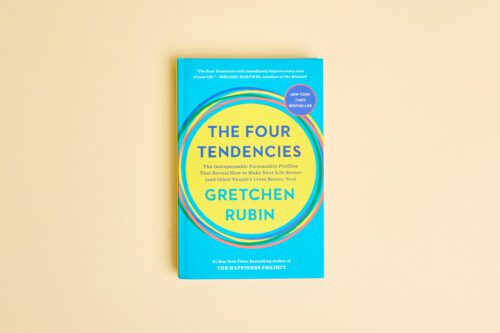When I talk to people about the Four Tendencies, one issue that often comes up is, “Has your framework been scientifically validated?” People want to know about the research that supports the Four Tendencies.
As I describe in my book The Four Tendencies, as part of my work on these personality profiles, I ran a study among a nationally representative sample, to examine a geographically dispersed group of U.S. adults with a mix of gender, age, and household income. I learned a lot from that study.
I’m excited, too, to announce that a team of researchers has published a scientific article about using the Four Tendencies in health-care. This is particularly gratifying, because one of my main goals for writing the book was to help health-care providers find more effective ways of supporting patients in following their treatment plans.
Why don’t people take their medication, do their exercises, manage their blood sugar, follow doctor’s orders — when it seems clear that they’d be healthier and happier if they did? I believe the Four Tendencies sheds a lot of light on this question of “adherence” — and how to solve it.
Here’s the conclusion:
“Increasing adherence to treatment is critical for improving outcomes and minimising healthcare resource waste. In general, several of the interventions available today are complex, resource intensive, expensive, and lack a firm focus on the patient. We need an effective method to target the specific interventions that provide the most benefit to individual patients, and it is crucial that this method be easy and inexpensive to administer, and widely applicable, as part of everyday practice. Rubin’s Four Tendencies model provides an opportunity to test such a targeted, patient-specific strategy. Such a tool is only useful if the interventions that are most effective for patients with a specific Rubin Tendency exist and can be implemented easily. In an environment with already stretched resources where the factors influencing adherence are complex and varied, the ability to tailor interventions to the patient is an important component of a wider problem.”
Read the full article here.
I asked Paul Lavender, who kicked off the process of getting this article written, about why he thought it was worth undertaking this research. He explained:
I think this model makes a huge contribution to the topic of personality and treatment adherence.
I’m generalizing somewhat, but it is fair to say that ‘personality’ is regarded as fairly unimportant in ensuring adherence. Why? Well, there are factors such as education, financial status, access to treatment, severity of disease, patient-doctor relationship, etc. that are shown to have a far greater impact than personality on adherence in well-controlled trials.
So why does the Four Tendencies add something valuable? I would say three reasons:
- It does not focus on ‘personality’ as a whole, but on the most important aspect of personality from a treatment adherence perspective: typical response to expectations. To give a personal anecdote, my wife, my best friend and I have all taken a well-established personality test and got the same personality ‘type’ – even though this ‘type’ only comprises 5% of the population. So you would think we are pretty similar? Well, on the big issues, yes – but she is 100% ‘Questioner’, he is 100% ‘Rebel,’ and I’m 100% ‘Obliger,’ so if we ever had to take a course of treatment, we would be very different – and a detailed personality test did not pick that up.
- It does not postulate that a personality type is indicative of poor adherence, but that a Tendency is indicative of poor adherence only in a certain environment. To my mind, this is absolutely crucial, and to my knowledge unique to the Four Tendencies. Knowing someone’s Tendency (with the exception of ‘Upholder’) will not allow you to predict their level of treatment adherence. For example, Questioners may be non-adherent in an environment where they are given little information on their condition and treatment, but absolutely adherent in the opposite environment. Consider that patient-doctor relationship is a large predictor of non-adherence (but treated as a separate factor from ‘personality’). If we hypothesize that poor patient-doctor relationships are often a ‘misalignment’ of Tendencies between the patient and the doctor, then the Four Tendencies model has the potential to have a huge impact on treatment adherence. In short, the Four Tendencies model postulates that 80% of patients are more likely to be non-adherent in a particular treatment environment. It is relatively easy and inexpensive for health care practitioners to change the treatment environment.
- It is easy to understand. One problem with many psychological models is that they can only be understood by psychologists. Rubin’s Four Tendencies is simple to pick up for all health-care practitioners, from all disciplines.
I’m very pleased to see the scientific community engage on the Four Tendencies — exciting to see other people grappling with the framework.




